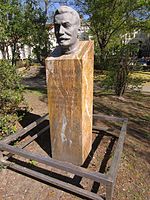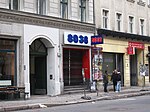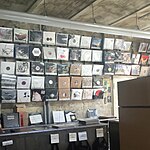Friedrichshain-Kreuzberg Museum
Buildings and structures in Friedrichshain-KreuzbergHistory museums in GermanyLocal museums in Germany

The FHXB Friedrichshain-Kreuzberg Museum is a local history museum focusing on the borough of Friedrichshain-Kreuzberg in Berlin, Germany. It contains a historical archive related to both parts of the district, permanent exhibits on urban development and social and immigration history, temporary exhibits on the district's past and present, and a historic printing press. The museum is part of the Culture and History Department within the district administration of Friedrichshain-Kreuzberg, and is located at Adalbertstrasse 95a in Kreuzberg.
Excerpt from the Wikipedia article Friedrichshain-Kreuzberg Museum (License: CC BY-SA 3.0, Authors, Images).Friedrichshain-Kreuzberg Museum
Adalbertstraße, Berlin Kreuzberg
Geographical coordinates (GPS) Address Nearby Places Show on map
Geographical coordinates (GPS)
| Latitude | Longitude |
|---|---|
| N 52.50069 ° | E 13.41828 ° |
Address
Saz Bar
Adalbertstraße 95a
10999 Berlin, Kreuzberg
Germany
Open on Google Maps










